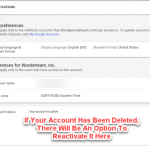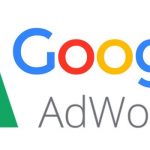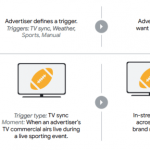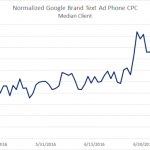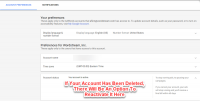Google Display Network: An optimization and fraud-avoidance guide
Columnist Ratko Vidakovic highlights issues that can potentially arise during a GDN campaign and discusses ways to optimize your display advertising campaigns to avoid fraud and reach your performance goals.

I recently finished a campaign audit for a client who spent tens of thousands of dollars advertising on the Google Display Network (GDN). The campaign ran for a couple of months and generated a significant number of impression and clicks. It even generated over 150 conversions!
However, virtually all of those conversions were bogus.
Disappointed, this advertiser brought me on to investigate. During the campaign audit, I found that a large portion of the budget was spent on either non-transparent (anonymous) or low-quality placements, which I believe were a result of click fraud, given the cost-per-click (CPC) pricing model used for the campaigns. I also believe that the fraudulent conversions resulting from these campaigns were related to these low-quality placements.
It’s important to note that this campaign was only using audience-targeting tactics, meaning it targeted a specific group of people — in this case, those who had an affinity for the advertiser’s product category — no matter what site they happened to be visiting, as long as it was running AdSense and part of Google Display Network (GDN).
Even though the findings of the audit were specific to this advertiser, I share these insights with you because the lessons and recommendations should serve as a universally valuable example.
The following findings, in order of severity, shine a light on the quality issues found. You might want to keep an eye on your own campaigns for these issues:
Highly suspicious conversion sources
After digging into the placement reports, a large number of placements that drove conversions showed signs of incentivized and fraudulent traffic. Ideally, these sites should have been identified in the conversion reports so that individual conversions could be associated with specific sites, and low-quality sites removed during the optimization process.
The most suspicious placements were those that generated one or two clicks from one or two impressions and resulted in one conversion. These placements effectively had a 50 percent to 100 percent click-through rate (CTR), and a 50 percent to 100 percent conversion rate. To anyone who has experience buying media, the odds of this occurring are virtually zero, which is what makes these sites the most suspicious of all the placements.
The following list of domains is a sample of placements that generated a conversion from either one or two clicks and from one to three impressions:
- rolexphoto.info
- brownreclusespider.org
- collectiblepassions.xyz
- civilwarphotos.net
- myfitness-health.online
- callerdetails.org
- gymalcoholic332.tk
- guestsatisfactionsurveys.com
- phonenumbercustomerservice.us
- virtualprivateservershd.com
All of these obscure placements are low-quality and highly suspicious, and many are MFA (Made For AdSense) sites. It’s important to keep in mind that the majority of fraud originates from obscure sites such as these, whereas the majority of real, legitimate visitors go to recognizable publishers.
It’s also worth noting that the bar for getting a Google AdSense account is not very high, which naturally attracts a vast array of long-tail, and potentially low-quality, publishers to the Google Display Network.
Abnormally high click-through rates
Many of the sites found in the placement reports of these campaigns also had CTRs that were far outside the normal range, which is a classic sign of click fraud. In fact, the CTRs were astronomically high for display ads of any kind.
Normal CTRs for digital display advertising are anywhere from 0.1 percent to 0.3 percent, and that is assuming good ads. It’s usually much lower. As a rule, anything north of 1 percent is suspicious, even with audience-targeted campaigns.
As I said earlier, I believe this abnormal activity was a result of using the cost-per-click (CPC) pricing model for these campaigns, which incentivizes click fraud — whereas CPM (cost per thousand impressions) pricing does not.
Based on this CTR analysis, tens of thousands of dollars and clicks were siphoned off by sites that delivered over 10 percent CTR. In other words, a significant portion of the advertising budget was absorbed by thousands of sites that basically only got one or two clicks.
However, each of those clicks, even if they are only a dollar, can quickly deplete your budget, especially if multiplied by thousands of sites. It’s like death by a thousand cuts.
It’s also worth noting that the sites responsible for all of these suspicious clicks only contributed to 0.47 percent of the total number of impressions. In other words, less than half a percent of the overall ad views consumed over 25 percent of the budget!
Conversely, 90 percent of all the impressions bought originated from sites that exhibited no suspicious activity, and yet they consumed only 40 percent of the budget. So less than half of the budget generated the vast majority all of the ad views.
Volume of anonymous clicks
Anonymous domains generated a very high volume of clicks in these campaigns, especially compared to other sites. As a result and, again, due to the CPC pricing model, these anonymous placements absorbed the highest dollar amount compared to any other placement, which is obviously suboptimal.
For example, the placement that garnered the most clicks, by far, was “anonymous.google,” accounting for:
- 4,028 clicks
- 5,167,913 impressions
- £2,044.23 ($2691.68) in ad spend
It’s worth noting that just because ads ran on these anonymous domains is not proof of any wrongdoing or fraud.
However, the lack of transparency is concerning because it’s impossible to know where these ads ran, which means there’s no ability to audit the domains on which they ran. In other words, with these anonymous placements there is no way, in retrospect, to figure out whether these clicks came from sites with suspicious activity or brand safety issues.
Ads lacking UTM tracking parameters
While reviewing the destination URLs for the ads used across these campaigns, I found that many of the ads did not use UTM tracking in the URLs. This was a missed opportunity to get richer analytics, which would have allowed for better optimization and fraud detection, especially as it related to bogus conversions.
In the case of these campaigns, if UTM tracking parameters were used across the board and passed the placement domain through to the destination URL, it would have been possible to see the sites responsible for each bogus conversion.
Recommendations
If you notice similar issues in your campaigns, I recommend the following actions, in the following priority.
If you choose to continue using Google Display Network via Google AdWords:
Configure your campaigns to use CPM pricing instead of CPC
It’s very tempting to use CPC pricing. After all, you only pay when people click your ads, so it should be less risky, right? In theory, yes. However, by using CPC pricing, you are much more vulnerable to click fraud.
Click fraud activity may still continue with CPM pricing in place, but at least you won’t be paying for it. In other words, someone can click on your ad a hundred times, but you won’t be charged for a hundred clicks.
Furthermore, you can still identify suspicious click activity, even though you won’t be charged for it, and optimize it out of your campaigns to clean up your reporting.
Define explicit placement lists instead of explicit exclusion lists
The way the campaigns in this audit were configured was based on a run-of-network approach where every site in the Google Display Network was targeted, as long as someone in the target audience was viewing them, and specific placements and topics were excluded. (In this case, hundreds of categories were excluded or blocked.)
This approach provides the most reach, which is beneficial in an audience-targeted campaign. However, it is also the most vulnerable to fraud, since fraudulent sites are almost impossible to keep track of, and it becomes a perpetual game of whack-a-mole. And yet, in this case, there was still fraud.
By having an explicit inclusion list, or “whitelist” as it’s sometimes called, your ads will only show on sites that have been specifically defined. In this case, I would have used the list of placements that showed no suspicious activity, and made that a starting point for an inclusion list. From there, it can be further pared down.
One of the risks or tradeoffs to using an inclusion list is that is you’ll have reduced scale, or reach, to some degree. Since you are trying to match an audience wherever they happen to be online, you want maximum reach. If you don’t have a large enough placement list, you risk under-delivering. But that can easily be remedied by expanding the placement list.
Use UTM tracking codes in destination URLs to track placement performance
Passing variables like site placement into the destination URL is a good practice because it gives you better visibility into the performance of your campaigns, specifically at the placement level. This will provide you with more granular reporting capabilities, especially as it relates to post-click performance.
Some metrics you will gain, on a per-placement level, are bounce rate, pages per visit and visit duration. Consequently, it should be easier to analyze and optimize away from fraudulent activity because you will have full visibility into placement performance.
If you choose to use a demand-side platform (DSP) for your future display ad campaigns:
Procure a trusted DSP vendor, such as The Trade Desk or DoubleClick Bid Manager
This will give you the most transparency and control into your display campaigns, assuming you are able to meet their contractual minimums. The DSP route will also open the door to a wider selection of targeting tactics, inventory sources and data providers. Most importantly, you will have the ability to use your own ad server.
You will also have access to the DoubleClick Ad Exchange (AdX), which is basically a premium version of GDN. The bar is much higher to get accepted into AdX as a publisher. Millions of impressions are required, which naturally filters out most long-tail sites. But the only way to access AdX as an advertiser is through a DSP.
Procure an ad server (for advertisers), such as Google’s DoubleClick Campaign Manager
A third-party ad server will give you an independent source of truth when it comes to auditing your display ad campaigns. No matter where you execute your display ad campaigns, a third-party ad server will allow you to aggregate performance, and audit discrepancies with any publishers or ad-buying platforms.
Most importantly, your own ad server will allow you to work with ad verification firms like Integral Ad Science, DoubleVerify or Moat, allowing you to automatically detect invalid or suspicious traffic. This is not currently possible on GDN.
In the scenario where you use both DoubleClick Bid Manager (DBM) as your DSP (demand side platform) and DoubleClick Campaign Manager (DCM) as your ad server, you get the advantage of even better reporting, since both systems are integrated. Consequently, you get unique reporting, such as “path to conversion” reports, which many advertisers find very valuable.
Closing thoughts
For advertisers that are just starting out with display advertising, GDN is probably the best place to get started. It’s especially tempting for advertisers to use the CPC pricing option, since it’s apparently less risky. However, as with most display advertising, vigilance is required in order to avoid fraud, ensure brand safety and optimize toward your performance goals.
The issues we covered in this article highlight some areas worth paying attention to for your own campaigns, and they should give you some ideas for how to optimize your display ad campaigns in the future.
Some opinions expressed in this article may be those of a guest author and not necessarily Marketing Land. Staff authors are listed here.
Marketing Land – Internet Marketing News, Strategies & Tips
(59)



